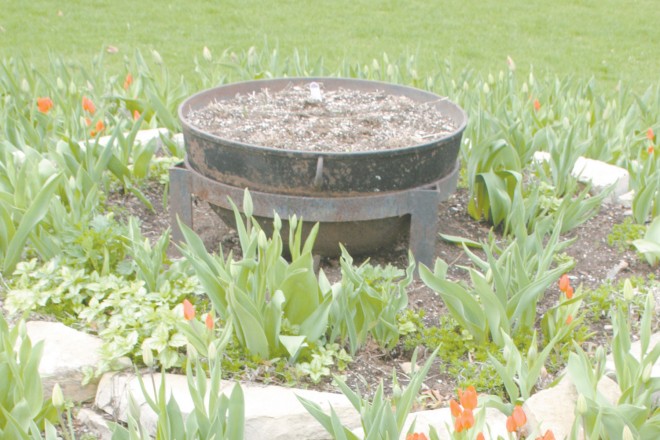Thwarting The “Door County Potato”
- Share
- Tweet
- Pin
- Share

Thin, rocky soil is probably the most common challenge for peninsula gardeners. Although a few areas have the good fortune of deeper soils, most of the northern portion of the county has a very thin layer of soil over the bedrock. Often, even this little soil is of poor quality and shovels are frequently stopped with the characteristic clunk of striking the infamous “Door County Potato.” These poor quality soils are not only difficult to work, but also often require a great deal of amendment with imported topsoil, compost, or peat to prepare them for bedding plants.
Should you find the area you have chosen for your garden lacks deep soil, you’re in good company. Many have found that even when a lot has been back-filled around a new construction site, there still may not be enough healthy topsoil to work with. In either case, a raised bed may be the simplest solution.
If soil quantity or quality is not a problem in your garden, a raised bed can also add structure and focus to a planting area. They can direct the flow of traffic on your property or direct attention to particular points of interest in the garden. Raised beds create pathways throughout the garden area, while pavers, flagstone, or crushed-stone walks between raised bed borders can create a sense of neatness and order within the garden. Planned well, raised beds also permit access from the sides, allowing one to work in the bed without physically walking onto it.
The “raised bed” is simply a garden area that is framed to hold topsoil above the level of the surrounding surface of the ground. Raised beds permit the gardener to increase the soil depth of the bedding area with a minimum of additional topsoil. Rather than importing enough topsoil to back-fill and re-grade an entire lot, most raised beds can be filled to an adequate depth with wheelbarrow loads, rather than dump-truck loads of soil. These beds also improve soil drainage while reducing soil compaction and work well to increase bedding soils for foundation plantings around buildings.
“Container garden” is simply a fancy title for a garden design of plantings grouped in pots or other types of vessels. The greatest advantage of the container garden for the local gardener is that they can be placed in areas with little or even no topsoil. If your lot has an exposed surface of bedrock, you may find that this type of garden is not only practical, but particularly attractive when juxtaposed with Door County’s natural limestone.
Another benefit enjoyed by those who keep container gardens is the ability to experiment with plants that would otherwise suffer a cruel winter fate. The design and layout of gardens adorned with container planters can be rearranged at a whim. Redesign can be used to adjust for seasonal colors or to maintain continual bloom simply by rearranging the potted plants. Likewise, plants that are doing poorly due to conditions in one area of the garden can be relocated to find more appropriate amounts of light, shade, or moisture.
Raised beds and containers also give the gardener control of the aesthetic impact of the garden through the design and choice of materials for the borders and through the selection of potting vessels. Raised beds may be constructed very simply with 2” x 10” framing lumber, or with timbers, pavers, flagstone, beachstone, etc. Likewise, one will find myriad styles and shapes of containers from the standard clay pot to hand-painted or glazed ceramics. One may consider salvaged items such as antique wheelbarrows or crocks to provide points of interest within the garden. As much imagination can go in the selection and arrangement of the pots and containers as in the choice and design as the plantings themselves.
